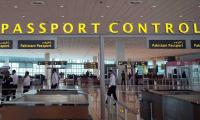The PPP’s December 27 announcement that Asif Zardari will now operate through the National Assembly along with Bilawal Bhutto-Zardari was somewhat surprising for political pundits. Does it point to a new threshold in politics of Pakistan or is it business as usual?
At the first instance, it brings an actor in a new situation, a fresh news-maker, a new excitement to the political scene. It also represents an incipient movement from a bilateral to a tripartite struggle for power in Punjab that was once a PPP stronghold. Suddenly, the 2018 election has started to look more real and interesting with another serious contender for power in the field.
Of course, the media had predicted that Bilawal would be inducted into the National Assembly. What has now made Zardari jump into the fray, is the tricky question. Perhaps, the role was considered to be too big for the delicate shoulders of Bilawal Bhutto. Perhaps the time was ripe for a masterstroke if the PPP was to play a strategic role at the national level in the forthcoming elections. Perhaps, the party wanted to roll back the federal government’s perceived encroachments on Sindh through the Rangers by making its own presence felt in Islamabad.
If only Bilawal has to go to the National Assembly, he will have the cushion of Khursheed Shah as his mentor. In the new situation, where both father and son would be present on the floor of parliament, there can be points of clash on two counts. First, Zardari’s paternalistic guidance may be too much for the young and potentially rebellious mind of Bilawal. Second, Zardari’s masterstrokes in the form of making alliances with other parliamentary groups beyond any constraints of ideology or policy can run counter to Bilawal’s youthful exuberance and sincerity of purpose. Is another Palejo syndrome in the making?
Will the ex-president make a good parliamentarian? His famous talent for coalition-making with ethnic, religious and mainstream parties can unite the ranks of opposition, with the possible exception of the PTI. The question is: will he bring politics back from the precipice where Imran Khan has taken it in the last three years, i.e. from street back to parliament, from the courts back to the polls, from the solo flight back to a collective initiative and from the un-parliamentary to parliamentary language?
Apparently, the real purpose of the two Zardaris entering the National Assembly is to increase the visibility of the PPP on the political horizon with a focus on the 2018 elections. One wonders about the future strategy of the party in Punjab where the real contest for power lies. In Punjab, the PTI recently dominated opposition politics on the street. It exhausted its energies on people rather than issues, on rallies rather than the doorsteps of people and on a persistently negative idiom rather than a positive agenda. Is the time ripe for a change of leadership, message and style of opposition in the country?
What would be the PPP’s strategy in Punjab? Will it follow the path of delineating issues and policies to win the hearts and minds of people? Or, will it opt for issuing tickets to potential winners in electoral constituencies whoever they may be? In the former case, it will focus on the party ideologues, trade unions, students, farmers and those from the squatter settlements. In the latter case, it will shy from ideological mobilisation and go for manoeuvring behind the scene to bring strong candidates into the filed.
With elder Zardari in, we’ll see less of younger Zardari on top, along with his innocence, his eccentricity and his charm. But the real issue is how far they can collectively pull up the PPP from the ashes in Punjab. The PML-N is a formidable force that has dug in for decades in the vast regions and districts of that province. It has garnered the support of local elites and established a working relationship with the bureaucracy. The PML-N, as the biggest stakeholder, has a lot to either gain or lose depending on the way it handles the PPP’s rejuvenated role in the province, if there is any.
How would Prime Minister Nawaz Sharif see the change from Imran Khan at the centre of opposition politics to Asif Zardari? For one thing, he would like to have a more stable and predictable opposition that would be willing to operate in a mode of bargaining with the treasury benches, and that would not challenge his present mandate before 2018. He would certainly prefer the civility of a political idiom over the street talk. But in any case, he would now face two discordant voices out there in Punjab instead of one.
On its part, the PTI is in flux. It is clueless about the PPP’s residual and passive support base from old times. It was able to lead the voice of dissent in recent years. It would now consider a new strategy to keep the momentum of its movement. Has it wasted three precious years after the 2013 elections in terms of not being able to do the spadework at the levels of the constituency and biradri? Should it have aimed at the 2018 elections and prepared for it, instead of seeking to short-circuit the PML-N’s current mandate?
How will the media play the PPP leadership’s new initiative? Will Asif Zardari have the potential to create news headlines with his statements and actions without necessarily going for marches and rallies? How serious is he to launch his long march? All rallies and marches involve the risk of failing to meet their targets. The PTI has experienced a series of such failures when the targets were not met. But its leader has showed an uncanny capacity to overcome the setbacks and face the public again, even though the ultimate cost in actual voting strength cannot be gauged straightaway.
As opposed to Imran Khan, Zardari rarely goes for a diatribe against other party leaders, except Nawaz Sharif who is finally and symbolically his foremost adversary. But Imran Khan is new, if not by age then by entry into politics, whereas Asif Zardari, Nawaz Sharif, Shujaat Hussain, Maulana Fazlur Rehman, Asfandyar Wali Khan and a host of others represent the old guard. It is here that Bilawal could make a real difference. Only his style of expression is alien and outlandish. There is still a disconnect between him and the general public that he needs to overcome.
Meanwhile, the PPP’s greatest dilemma remains in place: its acute dependence on its martyred leadership in lieu of a progressive agenda. It desperately needs a decisive move forward from the past to the present and future. Two generations have passed after the last PPP government ruled in Punjab. The party is anything but a household word in that province. Moreover, the PTI has filled the vacuum in terms of visibility if not yet in the context of vote. The 2018 elections can turn out to be the PPP’s Waterloo if it does not crystallise its message and carefully define its constituency.
The nation is in for an interesting battle of nerves among the mainstream leadership while the Zardaris and the Sharifs and Imran Khan play out a power game within and outside parliament.
The writer is a professor at LUMS.
To take part in revolution, farmers need resources to afford seed varieties, fertilisers, and cost of setting up tube...
Pakistan remains burdened by insufficient financial support, saddled with conditions that deepen dependency
Government implements key policy decisions aimed at stabilising the economy
This is not going to be feel-good, year-end piece where I will use motivational quotes to tell how resilient we are
State Bank overlook considerable challenges surrounding Pakistan's economy
Pakistan remains mired in what can only be described as a ‘Baby Boomer Syndrome’







